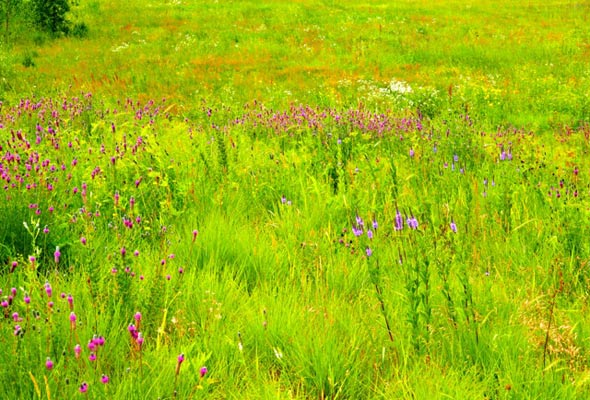RENEGADE GARDENER™
The lone voice of horticultural reason
“One can have a low-maintenance landscape”
 |
| A native prairie restoration on private property in Greenfield, Minnesota. It gets a thorough weeding every two years, and regular reseeding of perennials along with removal of dominating grasses. |
No, one can’t, not really. Trees, shrubs, perennials, all need regular watering, especially their first several years after planting. You can install drip irrigation to water everything, but it will water some plants too much and others not enough and in a year something will be dead. Hand watering is always better, and safer.
In a majority of residential soils, most plants are going to need fertilization at least once a year. Shrubs and numerous small trees eventually will need pruning. What’s that you say, I can plant a shrub that won’t get too large for its space? Alright, so you plant a row of shrubs on the property line or against a fence with ample room and you don’t care how large they get, in a few years parts of several shrubs are dead, and need pruning.
Then one day you look at the whole row and they’re covered in powdery mildew that has been building for three years, because you never go out and inspect your plants closely, at least once a week, too much work. They will need chemical control, pruning and other efforts to cure them, and even then they may die and need replacing.
People want perennials in their landscapes unaware they will need dividing every three to four years – it’s fun, I love dividing and replanting perennials.
Not even native landscapes are low-maintenance. Everything that needs monitoring and maintenance that exists in a highfalutin landscape of hybrid plants applies to a native landscape. And every portion of a landscape, even when properly mulched, will need regular weeding.
Keeping a landscape attractive requires monitoring, care and yes, maintenance. If you simply let the stuff go, it’s going to look like hell in five years and will cause your neighbors to slip anonymous notes into your mailbox in ten. So either pay for regular maintenance, or learn to do it yourself.
The latter is called “gardening.” It’s fun, it’s fascinating, it lowers blood pressure, increases vitality, improves your temperament, extends your life, and brings reward every time you step into the garden. It isn’t work, it isn’t “maintenance,” when you can’t wait for the weekend so you can go out and spend time doing it.
Don Engebretson
The Renegade Gardener